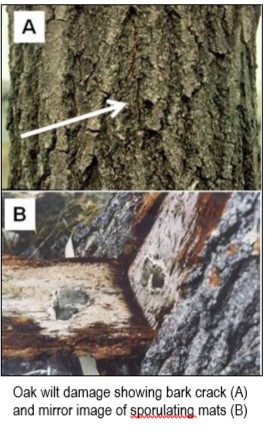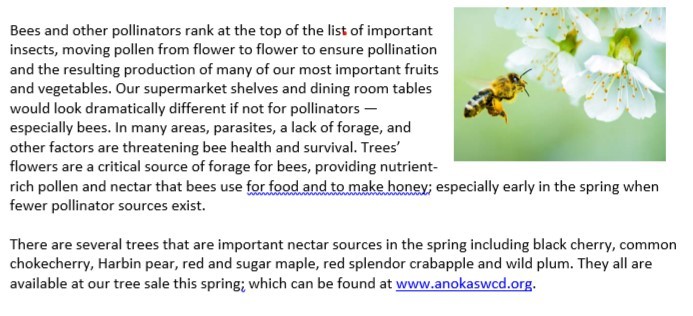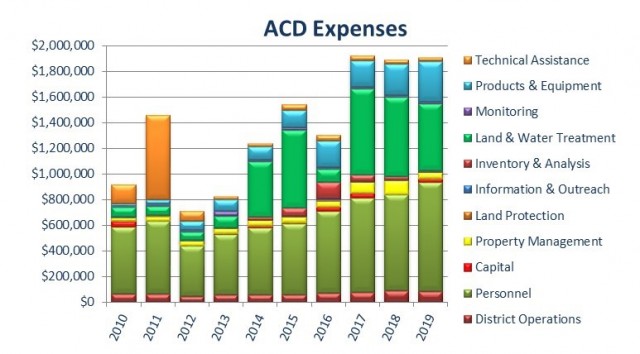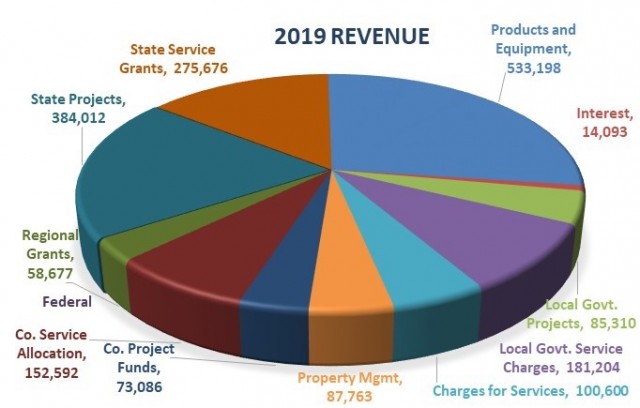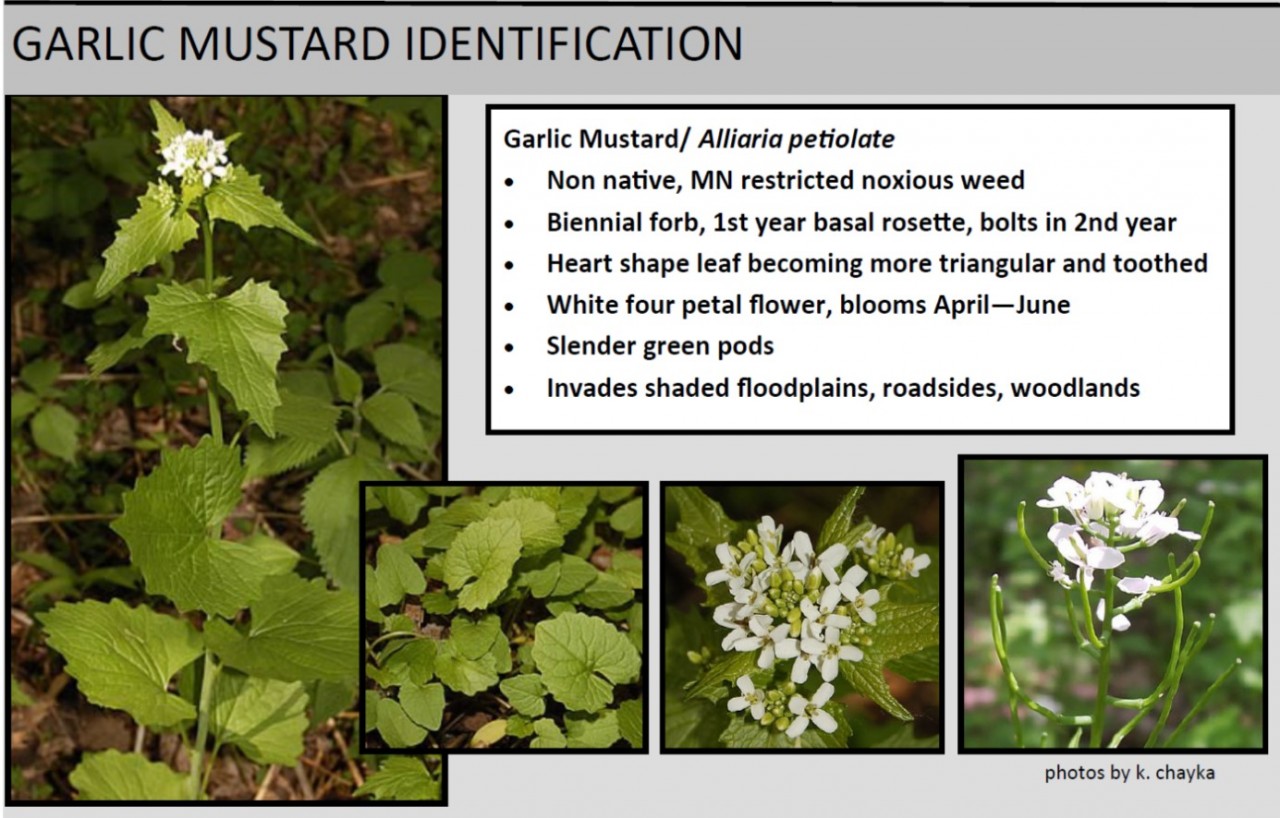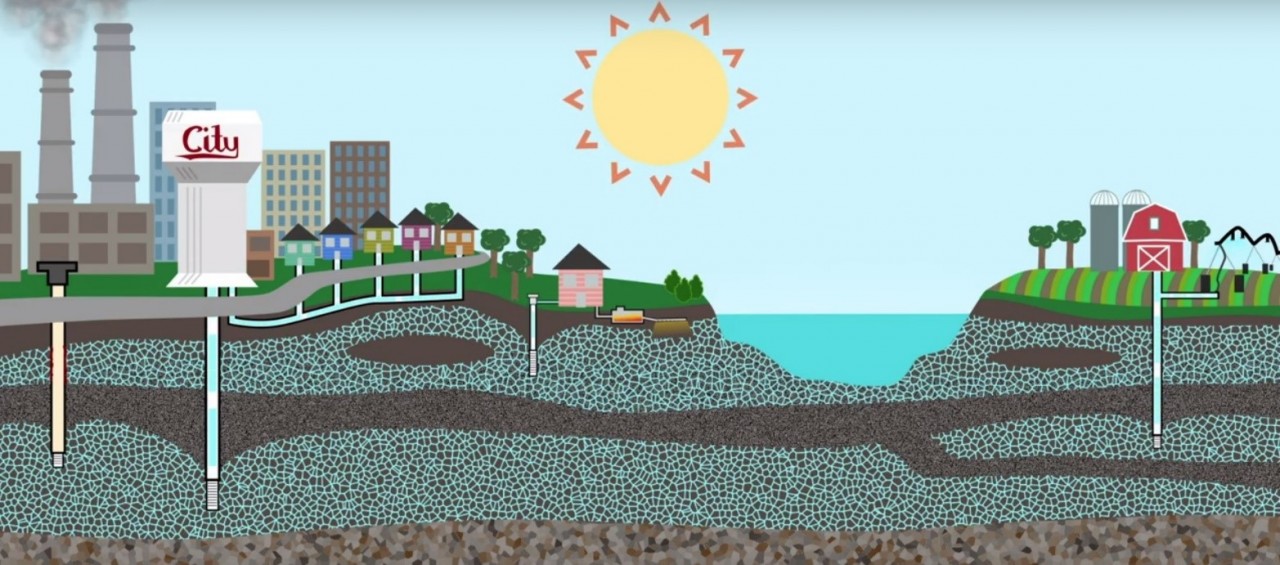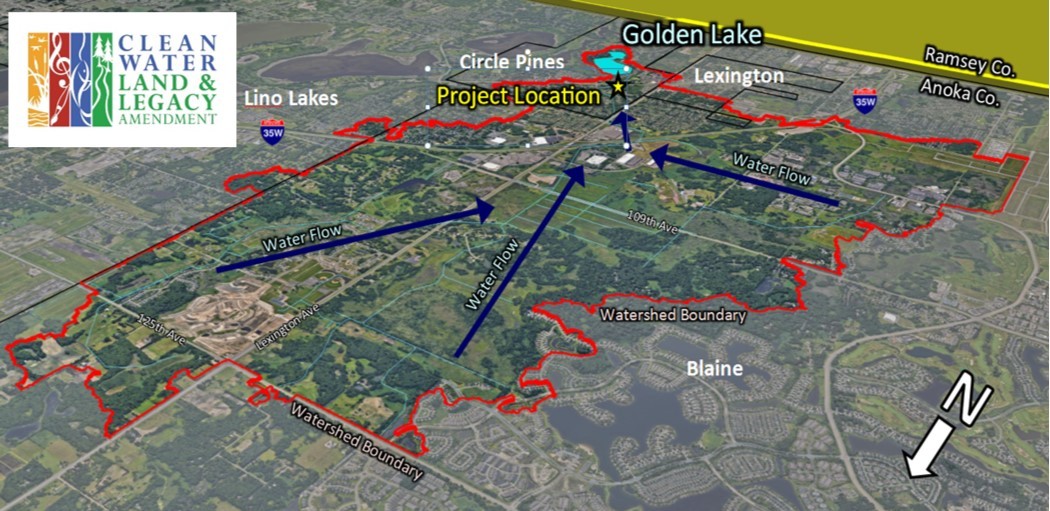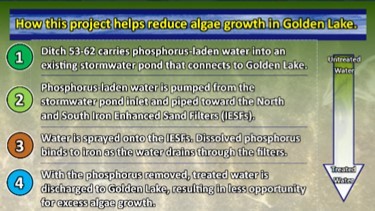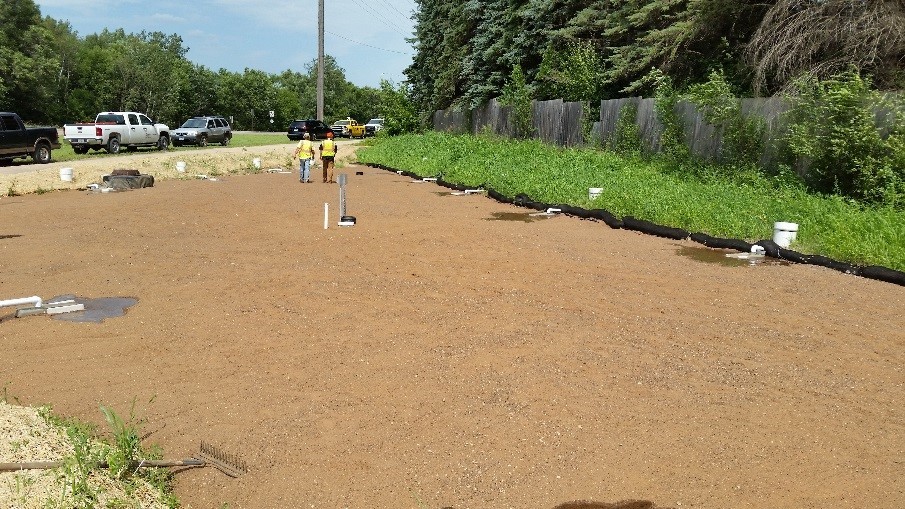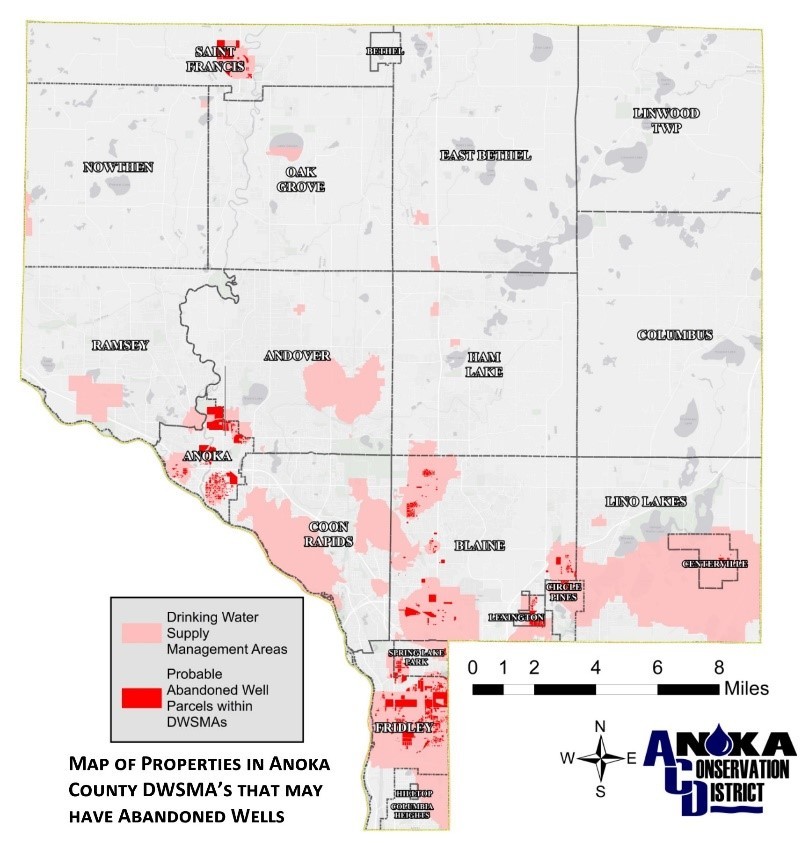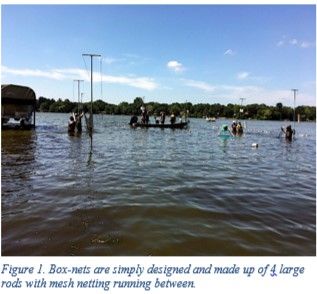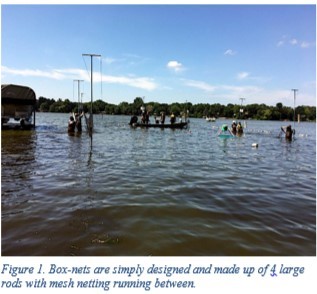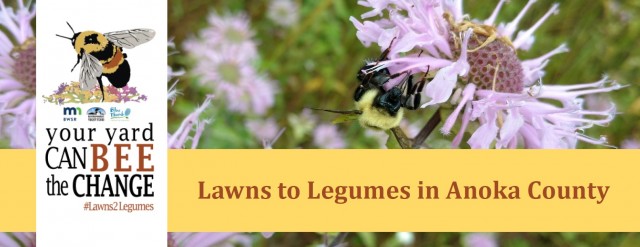Rain Guardian pretreatment chambers were recently featured in a new vlog focused on low impact development (LID).The vlog is called LIDBit and is coordinated by Rob Woodman with ACF Environmental.In the Rain Guardian episode, Rob interviewed Anoka Conservation District Stormwater and Shoreland Specialist, Mitch Haustein, about Rain Guardian pretreatment chamber functionality, configurations, installation, and maintenance.Check out the Rain Guardian episode and others on the LIDBit Video YouTube channel (https://tinyurl.com/vfmm9fc).
Sheet mulching – saves time, builds soil, and smothers existing weeds or lawn without using herbicide.
Sheet mulching is an excellent way to convert lawn to garden beds without using herbicides or excessive labor. Meanwhile it can build soil and be accomplished with readily available materials.
Begin by mowing grass or other vegetation in the area you want to convert into a new garden bed. It can be as simple as layers of newspaper or cardboard topped by four inches of mulch to smother grass and weeds underneath. If this is started in the spring, the underlying plants will have died from lack of light and the garden bed will be ready for planting in the fall.A more diverse layering of material will produce a compost that will break down and build your soil. For this, layer:
- Soil amendments if soil test results recommend amendments (lime, greensand, etc.). Recommended if you are creating a vegetable garden.
- Thin layer of compost.
- Wet newspaper or cardboard, 1/4 – 1/2 inch thick.
- Thin layer of nitrogen source such as manure.
- Layer of straw or leaves (carbon source).
- Continue to alternate layers of nitrogen and carbon sources.
- End with a top layer of mulch.
This type of bed is finished when these layers have decomposed. It may take the entire growing season to decompose sufficiently. If you start in the spring, the bed will likely be ready to plant in the fall.
See the Xerces Society Organic Site Preparation for Wildflower Establishment publication for more organic site preparation methods and directions:
https://xerces.org/publications/guidelines/organic-site-preparation-for-wildflower-establishment
Oak Wilt is becoming an increasing problem throughout the State and kills off a large number of oaks every year. Even though oak wilt is active in a large area of Minnesota, effective management techniques exist.
Oak wilt in a healthy tree will begin wilting the canopy. This usually starts at the top of the tree and spreads downward. The tree then sheds leaves, which will begin individually wilting at the edges and spread towards the midrib of the leaf or at the leaf tip and wilt towards the stem. A discoloration or streaking of the wood just below the bark may also be present.
In Red Oaks, the deterioration process can take as little as 4 weeks. In White Oaks, the disease may come back every year but death of the tree could take up to 5 years or longer after the initial symptoms appear.
Healthy oak trees are usually infected by the fungus's ability to move underground through the roots of nearby trees that have grafted together. In general, trees more than 50 feet apart are less likely to be infected through grafted roots. Sap beetles also transport the disease above ground by moving from an infected tree to a healthy one.
Stopping the spread of oak wilt is possible. Breaking root connections between closely spaced oaks will reduce the chance of the disease spreading from infected trees to nearby healthy ones. This takes a specialized piece of equipment and can be difficult to achieve. This is way preventing infection in the first place is the recommended best management practice.
Even though the nice weather makes you want to head outside and work on your property, you should avoiding pruning and wounding healthy oaks in the spring and summer. Between April and July, oak trees are at a much higher risk of infection by sap beetles who are attracted to fresh wounds in the bark of oak trees and may be carrying the fungus. Oak trees should be assessed for storm damage and any wound should immediately be sealed with a water-based paint of another type of plant sealer.
Other techniques to stop the spread of oak wilt include; avoid moving firewood from known infected areas, timely removal and disposal of infected trees, and the use of fungicide when necessary. Many times multiple approaches are necessary to slow or eradicate the problem. Meeting with a local tree care providers can help create a management plan that will be effective on your property.
If you have more questions or are concerned about Oak Trees in your area, contact a local professional to inquire about what can be done on your property. Early detection is still the best method of control.
ACD finances historically experience dramatic variability from year to year due to activities being driven by competitive grants, several of which have been in excess of $400,000. Many state grants are from sales tax revenue dedicated to natural resource activities. ACD is committed to accessing these funds so Anoka County taxpayers will benefit from them in proportion to sales tax paid in the county. Also of note is how consistent ACD's operational and personnel costs have been. ACD staff and supervisors strive to keep overhead costs down, while expanding service
Making Sense of the Dollars: Although governed by an elected board, conservation districts do not yet have taxing authority and must secure funds from many sources to maintain programs and services. State grants are the primary funding source for project installation, while the county provides seven times what the state does to support general district operations. County funds are critical because many grants do not cover overhead expenses. Unfortunately, many grants also require matching funds, so county funds must serve as match and cover all costs ineligible under complex grant rules.
Making Dollars of the Cents: To provide comprehensive natural resource management, ACD collaborates with cities, watershed management entities, state agencies, county departments, non-profits, and landowners on projects of mutual interest. The 2019 revenue chart begins to convey this but does not show the 68 projects and programs supported by 26 distinct funding sources, many of which supported multiple projects and programs. For example, County Project Funds alone is comprised of 12 projects, and State Grants were used in part to fund 35 different initiatives
Garlic Mustard / Alliaria petiolata
An invasive Species you can eat.
Garlic mustard is a highly aggressive invasive species, growing in woodlands and woodland edges. It is one of the first invasive species to emerge and flowers in May – June. It is a biennial forb, producing a basal rosette the first year and bolting to produce an elongated stalk, flowers and seed in the second year. Since garlic mustard is a biennial the main goal is to prevent the plant from going to seed. The best way to control garlic mustard is to hand pull the entire plant (including the roots). If flowers or seed pods are present, it is necessary to compost at a facility that composts at high heat. Plants can produce viable seed even after pulled.
Garlic Mustard is edible and has medicinal uses
Garlic mustard leaves are available very early in the spring as soon as the ground begins to warm. Like all greens, leaves taste better when leaves are young and before the plant has bolted. Leaves can be eaten raw or cooked and have a mild garlic and mustard flavor.
Popular recipes include:
- garlic mustard potato salad
- wilted greens in stir fry
- tabbouleh
- garlic mustard pesto
Medicinal properties of garlic mustard leaves and stems: antiasthmatic, antiscorbutic, antiseptic, deobstruent, diaphoretic, vermifuge and vulnerary (Grieve 1984 and Chiej 1984). Greens are high in Vitamin A and C.
Important! Never eat wild plants unless you are certain about identification. Some plants are poisonous. Know the site rules about harvesting plants on public and private lands. Determine past management of the area. Don't consume plants from areas that were treated with herbicides.
Grieve. A Modern Herbal. Penguin 1984 ISBN 0-14-046-440-9
Chiej. R. Encyclopaedia of Medicinal Plants. MacDonald 1984 ISBN 0-356-10541-5
The Metro Conservation Districts (MCD) received a Clean Water Fund Accelerated Implementation Grant to conduct analyses that identify cost-effective water quality improvement projects for priority waterbodies.The Subwatershed Analysis (SWA) process includes protocols for both rural and urban subwatersheds.Anoka Conservation District (ACD) employee Mitch Haustein provided training on the urban protocol and modeling process to over 30 staff from counties, soil and water conservation districts, and watershed districts throughout the 11-County Metro.
Since the SWA program began in 2010, over 60 analyses have been completed throughout the 11-County Metro that have identified more than 4,000 projects and resulted in the installation of hundreds of cost-effective water quality improvement projects.
The $200,000 grant awarded to MCD, which requires a $50,000 match, will result in the completion of an additional 15 SWAs.Previously completed SWAs in Anoka County are available on ACD's website (www.AnokaSWCD.org).
The second in a series of videos about groundwater was published on March 3rd, 2020. "Our Groundwater Connection: Contamination" is a follow-up to the original "Our Groundwater Connection" video published on June 11th, 2019. The video builds on the information viewers learned from the first video, focusing on how groundwater becomes contaminated and what we can do to prevent contamination. The video explains different sources of pollution, how pollutants travel and build up over time, and what happens when wells become contaminated. The video concludes with the message that "everyone has the responsibility to stop contamination from getting into our groundwater. When we work together to prevent pollution, we can ensure clean drinking water now, and for many generations to come."
The project was made possible because members of the Water Resource Outreach Collaborative pooled their resources to create a high quality product with minimal financial stress on any one organization. Partners from Washington County Public Health and Environment and the Minnesota Department of Health also provided input and support for the project.
On March 3rd, the video was debuted at the MN Rural Water Association Annual Technical Conference during a mini-session presentation by ACD's Outreach and Engagement Coordinator.
Watch on the video on YouTube by searching "Our Groundwater Connection: Contamination," or by clicking here: https://youtu.be/gRSHJpe8pq8
2019 marked the completion of a large scale water quality improvement project designed to removed excess nutrients form stormwater prior to it discharging into Golden Lake. Golden Lake is located in the City of Circle Pines and has been designated as being impaired by nutrient contamination. Excess nutrients lead to high algae growth and low water clarity. This project was completed by a partnership of the City of Circle Pines ($70,000) and the Anoka Conservation District ($12,000) with financial contributions from the Rice Creek Watershed ($50,000) District and the Clean Water Fund of the Clean Water Land and Legacy Amendment ($467,968)
Enter your text here ...
2019 was another banner year for precipitation in Minnesota, with over 20 individual annual precipitation records set, and the state turning in its wettest year on record.
Precipitation totals for the year exceeded 30 inches over all but about 5-10% of the state, mainly in far northern Minnesota, with totals exceeding 50 inches in parts of southern and southeastern Minnesota. Well over half of the state was 12-20 inches (or 50-70%) wetter than normal. Annual surpluses of that magnitude over such a large area contributed to 2019 being Minnesota's wettest year on record, on a statewide-average basis, with an average of 35.51 inches. This eclipsed the old record of 33.93 inches, set in 1977.
Although no climate observing station was able to break the statewide individual annual precipitation record of 60.21 inches set by Harmony in 2018, many stations with over 50 years of observations did break their own annual precipitation records. Rochester International Airport led the pack with 55.16 inches, breaking its old record by more than 11 inches.
The Twin Cities International airport, part of the longest station history in the state, had just broken its record in 2016, but broke it again in 2019, with 44.17 inches. Other records fell throughout the state. The majority of these stations broke records that had been set this decade.
Even closer to home, the ACD has utilized the precipitation data collected by our volunteer observers to assist with putting our monitoring well data in context. We have observed sustained wetland hydrology because of the abundance of precipitation. How this will affect how wetlands are managed in the present and future will need to be addressed by the current wetland regulatory rules and by utilizing the data we collect when reviewing wetland delineations.
This information is provided at the DNR Climate website:https://www.dnr.state.mn.us/climate/journal/top-weather-and-climate-stories-2010s.html
Here is a partial list of the records set this year.
| |
| Station | 2019 Precip records (in.) | Previous record(yr.) |
| Rochester | 55.16 | 43.94 (1990) |
| Owatonna | 53.50 | 48.40 (2016) |
| Zumbrota | 48.60 | 45.52 (2010) |
| Lake City | 43.85 | 43.59 (2002) |
| Minneapolis - St. Paul | 43.17 | 40.32 (2016) |
| Mora | 43.08 | 41.63 (2010) |
| U of M St. Paul | 42.95 | 41.67 (2016) |
| St. Cloud | 41.92 | 41.01 (1897) |
| Itasca U of M | 37.59 | 35.64 (1985) |
| | | |
In Anoka County, 330,000 residents (94% of the population) depend on groundwater for drinking water, using about 12 billion gallons annually.
In 2015, Anoka County identified more than 2,300 properties in Drinking Water Supply Management Areas (DWSMAs) that have a high potential of having an unused/unsealed well (see map to left). These abandoned wells pose a risk to human health by providing a direct, unmaintained conduit where contaminants, such as pesticides, nutrients, heavy metals, salts, hydrocarbons, and pathogens, can be introduced into groundwater drinking water supplies.
Anoka Conservation District (ACD) was awarded a Clean Water Fund grant to coordinate a cost-share program to financially incentivize Anoka County property owners to hire licensed professionals to seal abandoned wells in high priority areas (i.e. within DWSMAs).Through targeted outreach, ACD will identify landowners interested in participating, and the program will provide funding to seal up to 125 abandoned wells.
Carp populations have the ability to grow quickly and can be devastating to overall lake health if left unmanaged. This grant is focused on improving water quality, help reduce seasonal algae blooms and improve the habitat and life cycle for other game fish.
This grant is the fruition of hard work and support from many individuals and organizations. By continuing to plan and build strong local partnerships, these lakes are on track to meet management goals and prevent carp population increases that would likely cause declining water quality.
If you live on Linwood, Martin or Typo Lakes and would like to learn more about the program or would like to inquire about volunteering, please contact the ACD office. (763) 434-2030.
Managing natural resources is mostly about engaging people.While one landowner can make a change, groups of people can make big change.If you want to gather people to a cause, you'll need a party.
At the Anoka Conservation District we have the pleasure of being invited to many such parties.Lake associations, sporting groups, and civic groups gather people to summer barbeques, fall bonfires and winter fundraisers.Ideas for natural resources management are developed.Enthusiasm spreads.Funds are raised.Trusting relationships grow.It's arguably the foundation of natural resources management.
While we at the Anoka Conservation District are wonderfully proud of our part in natural resources management, we recognize that we are just a part.Here's a big word of THANKS to all those volunteers and groups that have parties that lead to cleaner lakes, healthy forests, and abundant wildlife!
Below are photos of a few great parties in 2019.
The Anoka Conservation District, in partnership with the cities of Fridley, Coon Rapids, Anoka, and Andover, were awarded $40,000 from the Board of Water and Soil Resources to establish a Lawns to Legumes Demonstration Neighborhood in the Mississippi and Rum River Corridor. The project will convert residential lawns into pollinator habitat in support of the Rusty Patched Bumble Bee and other at-risk pollinators. Residents interested in being part of a Demonstration Neighborhood in Anoka County should complete this form: bit.ly/lawns-legumes-anoka
In addition, there are several other ways to get involved:
- 1.Visit the Board of Water and Soil Resources website to learn more and download free resources: bwsr.state.mn.us/L2L
- 2.Sign up for a Lawns to Legumes Workshop near you: bluethumb.org/events (Landowner workshop will be scheduled in Anoka County in summer of 2020)
- 3.All residents may be eligible for individual mini-grant funding up to $350. Apply here: bluethumb.org/lawns-to-legumes
If you have any questions about how the Lawns to Legumes Program will work in Anoka County or how you can be involved, please reach out!




